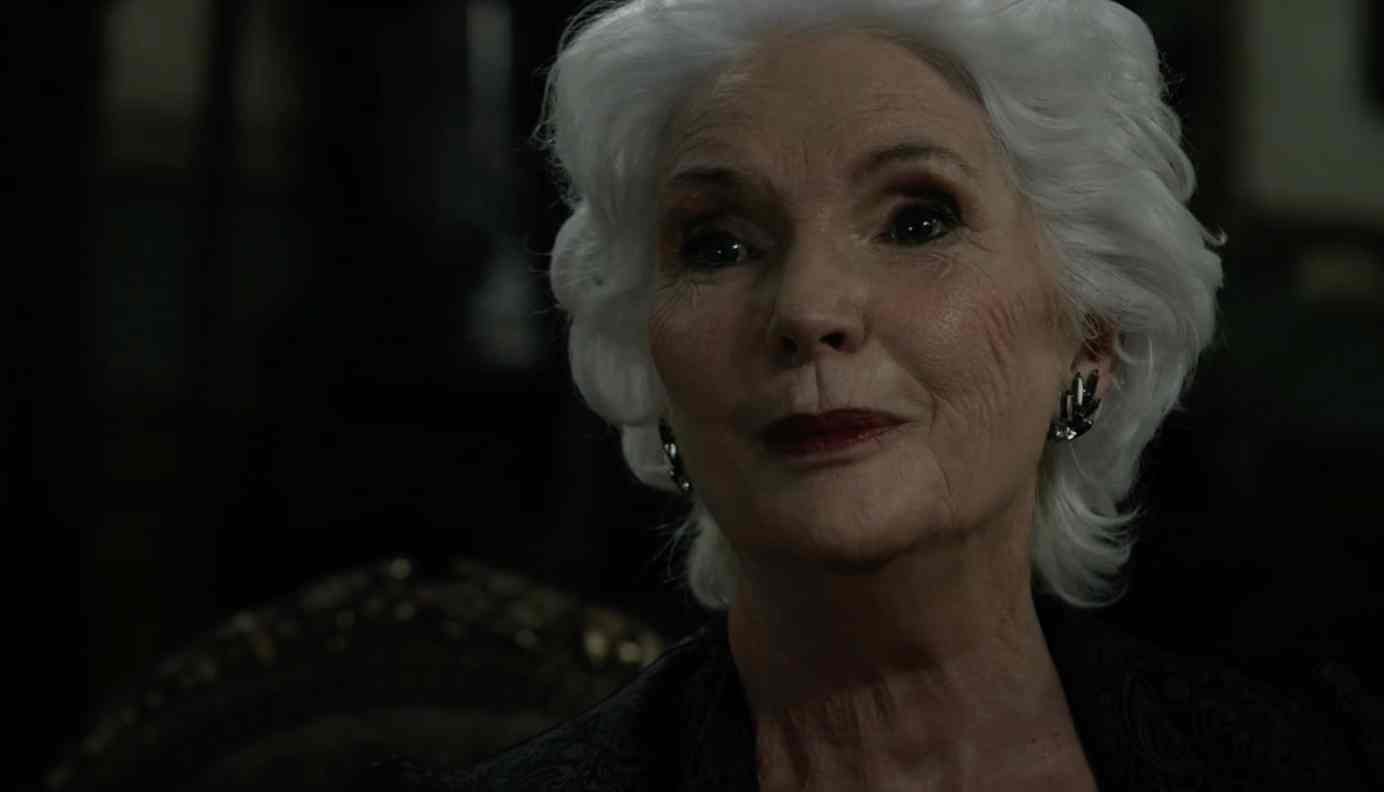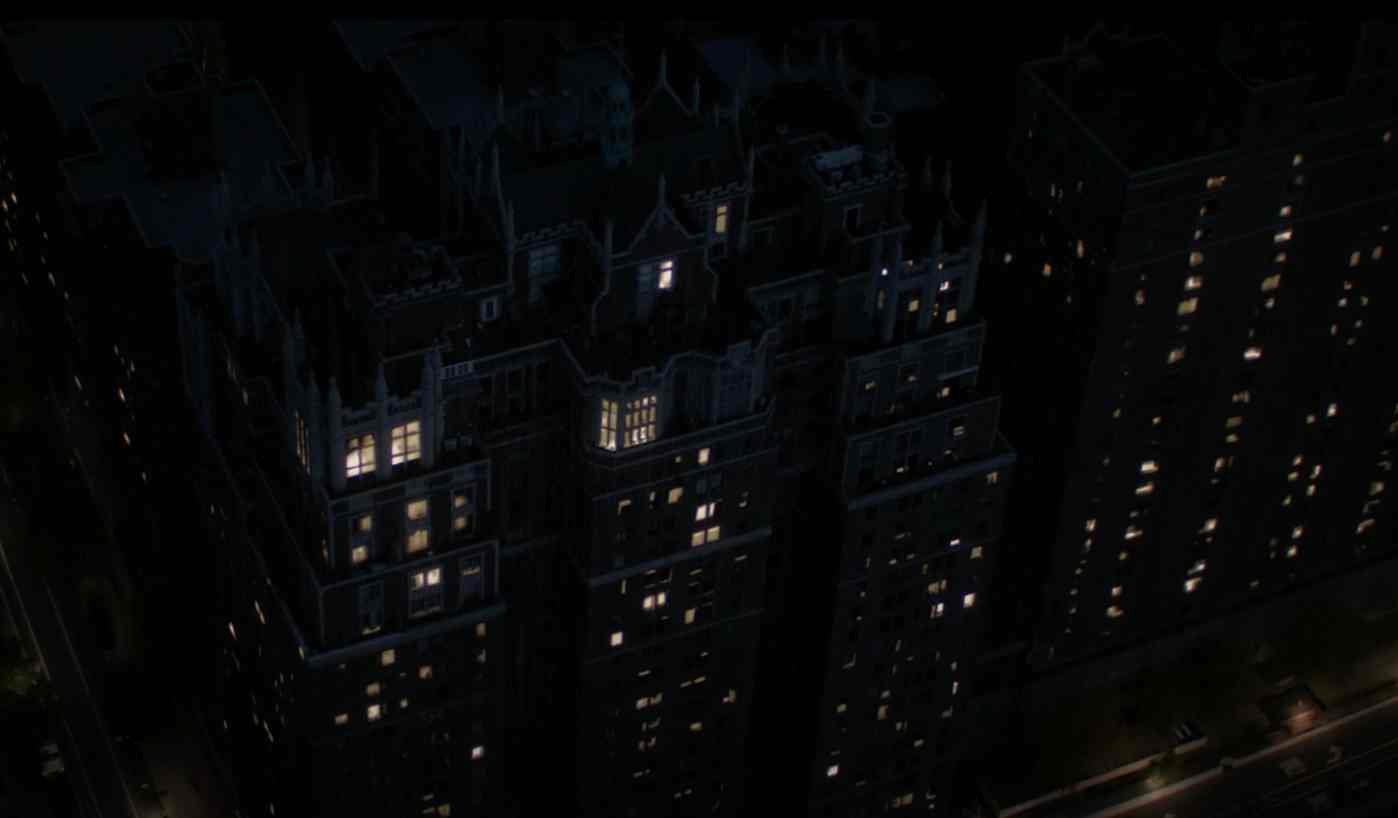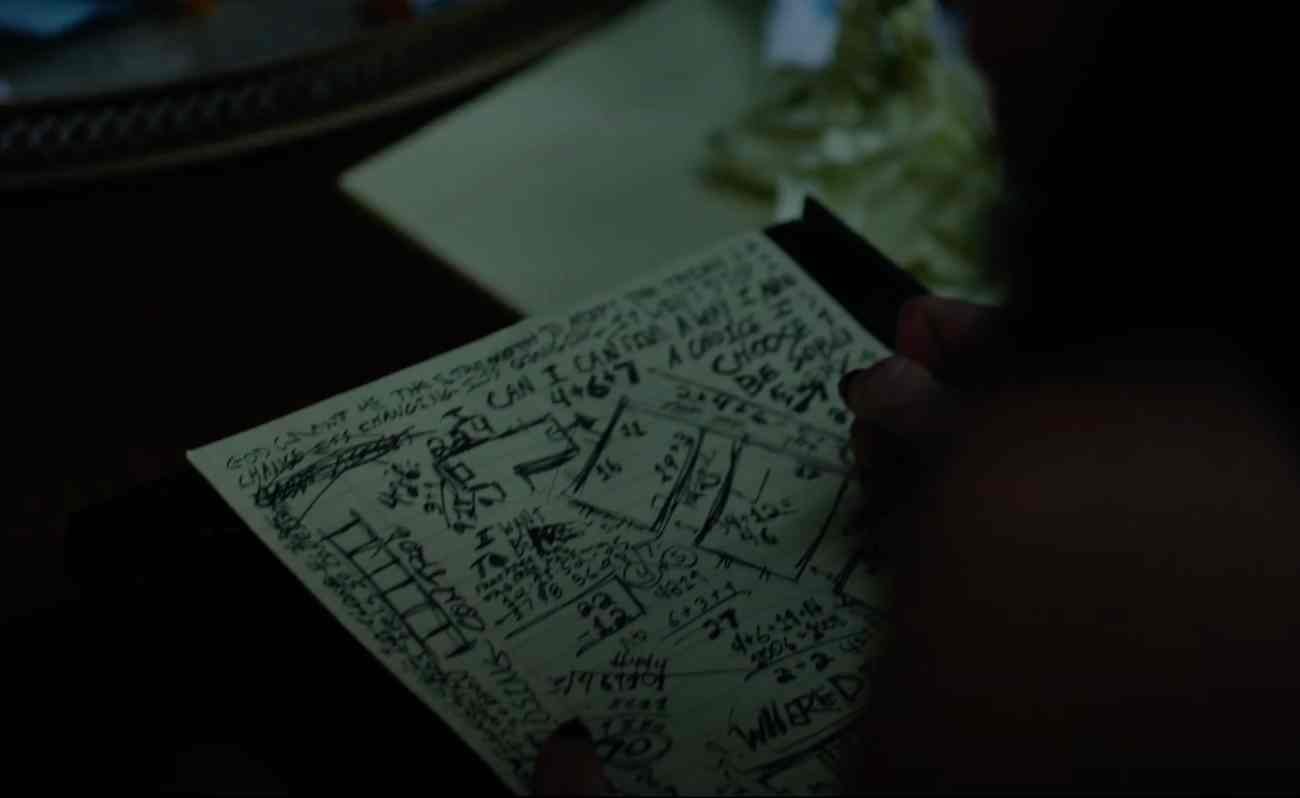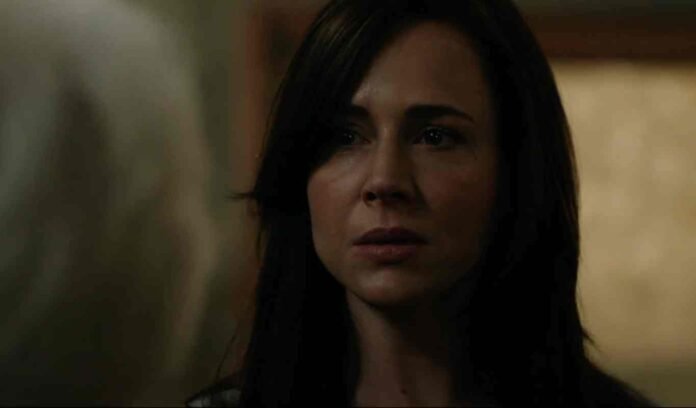- Title: Havenhurst (2016)
- Genre: Horror, Thriller
- Director: Andrew C. Erin
- Cast: Julie Benz as Jackie, Fionnula Flanagan as Eleanor Mudgett. Belle Shouse as Sarah
Havenhurst, a horror film released in 2016, takes audiences on a thrilling journey through the mysterious corridors of an eerie apartment building.
Directed by Andrew C. Erin, the movie stars Julie Benz as Jackie, a troubled woman seeking solace in the ominous confines of Havenhurst.
While the film provide a interesting setting and an intriguing premise, its execution falls short of delivering the thrills and depth expected from a horror narrative.
Also Read: Who Is Xelia Mendes-Jones? Interesting Facts About Fallout Actor
Atmosphere of Havenhurst
From the outset, Havenhurst attracts the viewers with its Gothic setting. An imposing apartment building shrouded in darkness and mystery.
The architecture, with its dimly lit hallways and antiquated interiors, sets the stage for a tale of supernatural intrigue. The production design effectively conveys the oppressive atmosphere lurking within Havenhurst’s walls, hinting at a sinister past waiting to be uncovered.

Every corner of the building seems to whisper secrets, and the audience is immediately drawn into its mysterious allure. The sense of foreboding is palpable, with each shadow concealing untold horrors and each creaking floorboard hinting at a malevolent presence.
The attention to detail in crafting Havenhurst’s eerie ambiance is commendable, as it successfully establishes an environment ripe for spine-tingling encounters.
Also Read: “Fallout” Series Recap & Ending Explained
Jackie’s Struggle
At the heart of the story is Jackie, portrayed by Julie Benz, a woman grappling with her own demons. A recovering alcoholic with a troubled past, Jackie seeks refuge in Havenhurst, hoping for a fresh start.
However, her new beginning is soon marred by strange occurrences – flickering lights, unsettling whispers, and shadowy figures lurking in the darkness.

As Jackie learns more about the building’s secrets, she discovers a connection between Havenhurst’s dark history and her own troubled past.
Jackie’s journey is fraught with tension as she confronts not only the supernatural forces at play within the building but also the ghosts of her own past.
Her struggles with addiction and trauma add layers of complexity to her character, transforming her into a compelling and relatable protagonist.
Benz’s acting makes Jackie’s struggles real, so we feel for her as she deals with Havenhurst’s dangers.
Also Read: Ending Of “The Serial Killer’s Wife”: A Recap And Explanation
Missed Opportunities
While Havenhurst’s premise holds promise, the film falls into the trap of following a well-worn formula in the horror genre. The story goes along as expected, with sudden scares that feel more like quick jolts than real frights.
The supporting characters, including recognizable faces like Danielle Harris, lack depth and fail to engage the audience on an emotional level.

Despite hints of hidden depths within some characters, these potential avenues remain largely unexplored, leaving viewers feeling disconnected from the story.
The film’s reliance on familiar tropes and conventions hampers its ability to break new ground and deliver a truly original horror experience.
Instead of subverting expectations and offering fresh insights, Havenhurst treads a well-worn path, ultimately failing to leave a lasting impression on its audience.
You May Like: Best Fantasy Movies To Watch Instead Of “Damsel” On Netflix
The Mystery of Havenhurst’s Past
One of the film’s strengths lies in its establishment of a sense of mystery surrounding Havenhurst’s history. References to past residents meeting tragic ends and whispers of a malevolent presence lurking within the building add to the intrigue.
However, Havenhurst ultimately fails to capitalize on this potential, delivering underwhelming revelations about the building’s dark past and the source of its evil.
The hints and clues scattered throughout the film build anticipation for a shocking and revelatory climax, but the payoff falls short of expectations. Rather than exploring the secrets lurking within Havenhurst, the movie takes a simpler route, missing out on the chance to really grab viewers’ attention and keep them hooked.
The mysteries of Havenhurst’s past are like a puzzle missing some crucial pieces, leaving viewers wanting more.
They’re left wondering about the secrets hinted at but never fully revealed. It’s like reading a book with the last few pages torn out – frustrating and unsatisfying.
Cinematography and Sound Design
While Havenhurst boasts competent cinematography and sound design, its technical aspects are a mixed bag. The use of shadows and darkness effectively creates an atmosphere of unease, but sluggish editing and pacing detract from the overall suspense.
Moments of tension are often undercut by awkward transitions and jarring cuts, disrupting the film’s flow and immersion.
Similarly, while the sound design succeeds in enhancing the film’s eerie atmosphere, it occasionally veers into melodrama, overshadowing the subtleties of the narrative.
Despite these shortcomings, Havenhurst’s technical elements contribute to its overall ambiance, albeit inconsistently. With tighter editing and more polished execution, the film could have achieved greater heights and delivered a more immersive and satisfying viewing experience.
Also Read: Where To Find Invincible Comics After Season 2
Ending: A Descent into Darkness
Havenhurst’s conclusion takes a dark turn, leaving viewers with a sense of despair and unease. Jackie’s desperate attempt to uncover the truth about Havenhurst’s connection to a murderous legacy leads to a harrowing confrontation with the building’s sinister inhabitants.
As Jackie sacrifices herself to save her friend Sarah, the film takes a disturbing twist, with Sarah ultimately succumbing to the darkness lurking within Havenhurst. The ending is a gut-wrenching culmination of the film’s themes of addiction and violence, offering no respite or redemption for its characters.
Instead, it plunges them deeper into the abyss, highlighting the cyclical nature of trauma and the inevitability of suffering. While bleak, the ending resonates with a haunting power, leaving a lasting impression on the audience long after the credits have rolled.
Cycle of Violence
At its core, Havenhurst explores themes of addiction and the cycle of violence. Jackie’s struggle with alcoholism serves as a metaphor for a deeper addiction to violence and control.
The Mudgett family, the twisted owners of Havenhurst, represent a generational cycle of abuse and darkness, with Sarah becoming the next victim ensnared in their web of horror.
The movie’s look at these ideas makes the story more interesting and thoughtful, lifting it above just being a typical scary movie and making us think more about life and people.
By shining a light on the destructive power of addiction and the perpetuation of violence across generations, Havenhurst forces viewers to confront uncomfortable truths about society and themselves.
Havenhurst’s ending, while bleak, sparks discussion and debate about the nature of evil and the possibility of its insidious influence. While some viewers may find the ambiguity thought-provoking, others may be left frustrated by the lack of resolution.
Regardless of interpretation, Havenhurst leaves a lasting impression of a world where darkness lurks beneath the surface, waiting to ensnare the unsuspecting.
The film’s ambiguous conclusion invites speculation and analysis, encouraging viewers to grapple with its themes and implications long after the credits have rolled.
While it may not offer easy answers or tidy resolutions, Havenhurst challenges its audience to confront the darkness within themselves and the world around them, sparking meaningful conversations and deepening our understanding of the human condition.
Personal Reviews:
- Roger Ebert (Chicago Sun-Times): “Havenhurst offers a chilling blend of atmospheric horror and psychological tension. Director Andrew C. Erin crafts a haunting narrative that keeps viewers on the edge of their seats. The film’s eerie setting and compelling performances make it a must-watch for horror aficionados.”
- Peter Travers (Rolling Stone): “In Havenhurst, director Andrew C. Erin delivers a spine-tingling experience that pays homage to classic haunted house tales while adding a fresh, modern twist. The film’s clever storytelling and gripping suspense keep audiences engaged from start to finish. A must-see for fans of the genre.”
- A.O. Scott (The New York Times): “Havenhurst is a chilling exploration of guilt, redemption, and the darkness that lurks within us all. Director Andrew C. Erin masterfully creates a sense of dread and unease, leading viewers on a terrifying journey through the haunted halls of Havenhurst. A haunting and thought-provoking film that stays with you long after the credits roll.”
- Stephanie Zacharek (Time): “Havenhurst is a stylish and atmospheric horror film that delivers plenty of scares. Director Andrew C. Erin creates a sense of foreboding from the outset, drawing audiences into a world where nothing is as it seems. With its strong performances and eerie visuals, Havenhurst is a haunting thrill ride that will leave viewers breathless.”
- Mark Kermode (The Guardian): “Havenhurst is a chilling and atmospheric horror film that delivers on both scares and substance. Director Andrew C. Erin crafts a compelling story that explores themes of addiction, trauma, and the supernatural. With its haunting visuals and strong performances, Havenhurst is a must-see for fans of the genre.”
FAQs (Frequently Asked Questions)
What is the Atmosphere of Havenhurst like?
The atmosphere of Havenhurst is Gothic and ominous, with an imposing apartment building shrouded in darkness and mystery. The architecture, dimly lit hallways, and antiquated interiors set the stage for a tale of supernatural intrigue, effectively conveying an oppressive ambiance ripe for spine-tingling encounters.
Who Portrays Jackie and What Struggle Does Her Character Face?
Julie Benz portrays Jackie, a troubled woman grappling with her own demons. Jackie is a recovering alcoholic with a troubled past who seeks refuge in Havenhurst, hoping for a fresh start. However, she soon encounters strange occurrences within the building, leading her to confront not only supernatural forces but also the ghosts of her own past trauma.
What are Some Missed Opportunities in Havenhurst?
Despite its promising premise, Havenhurst falls into the trap of following a well-worn formula in the horror genre. The film relies on familiar tropes and conventions, resulting in predictable scares and shallow character development. Additionally, the supporting characters lack depth, and potential avenues for exploration remain largely unexplored, leaving viewers feeling disconnected from the story.
What Strength Lies in the Mystery of Havenhurst’s Past?
One of Havenhurst’s strengths lies in the establishment of a sense of mystery surrounding the building’s history. References to past residents meeting tragic ends and whispers of a malevolent presence add intrigue to the narrative. However, the film fails to capitalize on this potential, delivering underwhelming revelations about the building’s dark past and missing opportunities to fully engage the audience.
How Does Havenhurst Explore the Cycle of Violence?
At its core, Havenhurst explores themes of addiction and the cycle of violence. Jackie’s struggle with alcoholism serves as a metaphor for a deeper addiction to violence and control. The Mudgett family, the twisted owners of Havenhurst, represent a generational cycle of abuse and darkness. By shining a light on these ideas, Havenhurst prompts viewers to confront uncomfortable truths about society and themselves.
What is the Ending of Havenhurst like?
Havenhurst’s conclusion takes a dark turn, leaving viewers with a sense of despair and unease. Jackie’s attempt to uncover the truth about Havenhurst’s connection to a murderous legacy leads to a harrowing confrontation with the building’s sinister inhabitants. The ending is a gut-wrenching culmination of the film’s themes of addiction and violence, offering no respite or redemption for its characters.
How Does Havenhurst Spark Discussion Among Viewers?
Havenhurst’s ambiguous ending invites speculation and analysis, encouraging viewers to grapple with its themes and implications long after the credits have rolled. The film challenges its audience to confront the darkness within themselves and the world around them, sparking meaningful conversations and deepening our understanding of the human condition.
